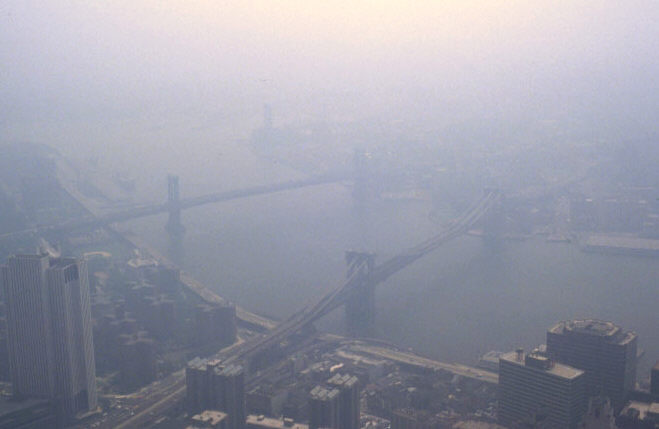A pair of U.S. federal agencies said yesterday that while automakers had complied with the first five years of stricter fuel-efficiency laws, the industry seemed unlikely to meet 2025 targets for improving gas mileage.
Rather than hitting the projected 54.5-mpg Corporate Average Fuel Economy—which translates to about 38 mpg on new-car window stickers—the EPA and NHTSA estimated that the average would come in at about 50 mpg.
A continuation of currently cheap gasoline prices and a profound consumer shift from passenger cars to light trucks, mostly utility vehicles, would prevent the full target from being reached, they said.
DON'T MISS: Gas Mileage Rules For 2025 Could Be Lowered If Buyers Stick With SUVs
The conclusion was contained in a report issued yesterday by the Environmental Protection Agency, the National Highway Traffic Safety Administration, and the California Air Resources Board.
As part of the agreement between automakers and regulators on stiffer fuel-economy standards that started in 2012, the standards were to be reviewed after several years had passed.
Called the Joint Draft Technical Assessment Report, it's the necessary first step for that "mid-term review" of how successful automakers have been at meeting the CAFE targets set for 2012 through 2017.

U.S. Capitol Building
The short answer is: quite successful.
As the report notes, carmakers have deployed a variety of technologies that have raised the average fuel economy of all classes of vehicles and met the targets for the first five years of the CAFE standards.
Those technologies include transmissions with more speeds, continuously variable transmissions, smaller engines with turbocharging, direct injections, lighter and more aerodynamic vehicles, and more.
ALSO SEE: Some Cars Today Already Meet 2025 Gas-Mileage Standards: Did You Know?
The conclusions in the report will be used as regulators debate whether to modify the standards for vehicles in model years 2022 through 2025.
That decision is expected to come early in 2018, following a lengthy period of public comment.
Those comments will undoubtedly include pleas from automakers to reduce the standards—through such groups as the Alliance for Automobile Manufacturers—while environmental groups will seek to maintain or strengthen them.

Smog in New York City
Since the report was issued, this website has received statements from 13 separate nonprofit groups on its conclusions, almost all recommending that the agencies stay the course or even strengthen carbon-dioxide emission limits and fuel-economy levels.
One from Luke Tonachel, director of the Clean Vehicles and Fuels Project at the Natural Resources Defense Council, typified those from the environmental groups:
The U.S. is firmly on the road to meeting its carbon pollution and fuel economy goals [and the] transportation sector is one of the largest sources of carbon pollution.
Continuing to strengthen clean vehicle standards is good for America's consumers—and it's absolutely critical to bringing about cleaner, healthier air and a more stable climate.
DON'T MISS: Fuel-Economy Rules Likely To Stay Put Through Midterm Review: Consensus (Dec 2014)
Justin Ford, a U.S. Army veteran and the director of Operation Free, a coalition of veterans and national-security organizations, took a different tack:
Improving national fuel-economy standards will make our nation stronger. By reducing our dependence on oil and combating climate change, we can make America safer and keep more of our men and women in uniform out of harm’s way.
When our vehicles travel further on each gallon of gas, less of our money is funneled to countries that don’t share our values and more of our resources stay here at home to be invested in the growing clean energy economy. America’s auto industry has already shown the ability to out-innovate the rest of the world—that’s exactly why we need to stay the course and continue to implement these standards.
And so on.
The report, however, notes the very real challenge of consumer preferences that have evolved from conventional passenger cars—largely sedans—to larger and heavier utility vehicles.

Gas pump
When the CAFE rules were first issued for model years starting in 2012, they assumed cars would account for almost two-thirds of U.S. vehicle sales in 2015.
But in the first six months of this year, passenger cars accounted for just 42 percent of sales, with 58 percent going to light trucks and utility vehicles, both SUVs and crossovers.
Still, the draft report notes that automakers have been exceptionally successful at meeting the standards thus far, and that fuel efficiency has risen across all classes of vehicles, from minicars to pickup trucks.
It concludes that technology has developed more rapidly than anticipated, that original cost estimates for meeting the targets were accurate or even high, and that it will be possible for carmakers to meet the final standards even without relying "significantly" on electrified vehicles.
Moreover, it suggests that the rapidity of the technology advances over less than 10 years indicates the potential for significant further increases in fuel efficiency in gasoline engines.

Ford's 1.0-Liter EcoBoost Engine
All of this is good news, both for car buyers interested in lower fuel costs and for green-car advocates.
Vehicle electrification, meanwhile, is likely to continue, driven by battery costs that are falling faster than expected, California's rising sales requirements for zero-emission vehicles, and slowly growing consumer awareness of the lower operating costs and superior driving experience of electric cars.
Meanwhile, the next 18 months will likely see intense debate—both in public and behind closed doors—over whether and how the standards should be altered.
Let the posturing and lobbying begin!
_______________________________________













